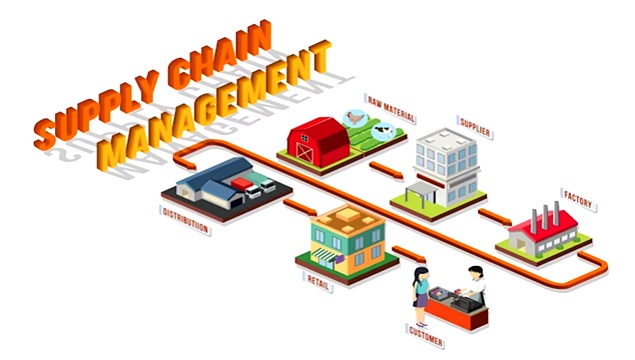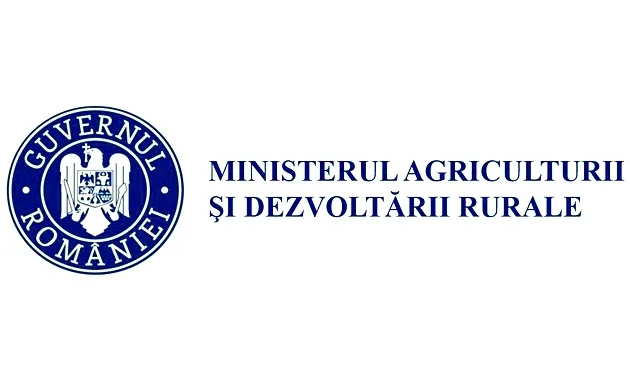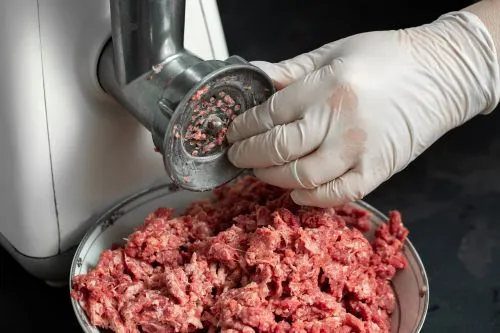
Efficient food distribution is achieved not only by considering the standards of quantitative management techniques but also by taking into account the specificities of each supply chain. In addition to factors such as perishability, safety, variability, and fixed payment costs, the food supply chain, due to its biological nature, is affected by increasing demand, pollution, water availability, rising costs, and complexity. Consequently, the landscape of food production has been continuously changing in the last 50 years and will continue to change in the foreseeable future, as stated in the study on the efficiency of food supply chains titled "Using logistic models to optimize the food supply chain," conducted by R. Garcia Souza Filho, a specialist at Computational Informatics Company, Clayton South.
A necessary review
Therefore, a review of current applications and optimization by the industry is relevant and necessary, although optimization methods for production and logistics are useful regardless of the product, especially since there are industry-specific concerns that add nuances to the outcome of logistic models.
This hypothesis is supported by van Asselt et al. (2010), who observed that food producers have different concerns regarding the risk factors threatening their supply chains.
For example, they highlighted that while all industries surveyed are concerned about logistics, fruit producers are more concerned about distances traveled than the complexity of the supply chain, which is more of a concern for dairy producers. How these differences are reflected in models may be of interest to readers.
Characteristics and trends
The application of optimization methods to agricultural supply chains dates back to the 1950s, with the seminal work of Waugh (1951), but it rapidly expanded in the mid-1990s, with a large number of publications in operations research and agricultural literature (Higgins et al., 2010). The opportunities for quantitative improvement of supply chains are abundant. Today, the following trends in food logistics can be identified as follows:
- Increasing online retail trade: End consumers seek the convenience of ordering food online, which is changing the operations of retail and hospitality companies.
- Industrial-scale food production: Population growth requires mass food production, and, as in other industries, marketing influences consumption patterns.
- New industry initiatives: Increasing public awareness of food safety and production-related concerns motivate farmers, retailers, and the food service industry to organize and self-regulate.
- Development and adaptation of sophisticated food safety management systems for the food services sector.
- The cost of certification, auditing, and quality assurance triggers technological innovations and better integration to improve efficiency and reduce costs along the supply chain. These changes will involve experts in food science, operations research (OR), environmental science, marketing, and business economics.
- The development of quality control systems that also address nutritional quality.
- Continuous rethinking of value and costs to avoid waste.
- Blurring and extending the boundaries of food factories to encompass multiple stages of the supply chain to minimize waste, water, and energy consumption (i.e., the factory of the future; see Augustin et al., 2013): This will affect process efficiency at the factory level but also the quality and functionality of the final product.
- Increased use of behavioral models for planning and their combinations with mathematical programming approaches (e.g., Howitt, 1995).
Success of analytical models
So far, the success of analytical, quantitative logistic models in food production has been limited, in part because optimization exercises focus on a single segment of the supply chain and lack a holistic perspective of the entire supply chain, and partially due to the inherent complexity of systems caused by the biological nature of supply chains.
This complexity is reflected in the high variability of food quality and costs at different points in the supply chain, the difficulty of incorporating sustainability, and the critical importance of processing and marketing time.
The management of food supply chains shares many of these characteristics with the general management of natural resources, including forestry and mining (Bjorndal et al., 2012). As such, many of the concerns and solutions proposed, such as sustainability, variability and quality, also apply to the latter industries.
Variability and uncertainty
Perhaps a distinguishing characteristic of all agricultural supply chains is their variability, which is evident at all temporal and spatial scales. The causes of this variability are biological, for example, the genetics of cattle breeds and grazing environments, for example, changing weather patterns that affect crops and forage quality, and socioeconomic, for example, changing demand patterns and political decisions that often affect production arrangements contracted.
The technique most often used to deal with the uncertainty related to these process changes is stochastic programming, according to a literature review. This type of programming and dynamic formulations are more suitable for capturing uncertain variables.
A stochastic program is an optimization problem in which some or all of the parameters are described by random variables. These formulations are not only more difficult to solve, but also require a deeper understanding on the part of the decision maker. Unlike deterministic solutions, where the solution prescribes unique values for the decision variables, the solution of a stochastic programming is the one that truly optimizes the expected value of the objective function.
Consequently, the stochastic solution is normally never optimal once the values of the variables are known, but at the same time it is almost never truly bad (Kall and Wallace, 1994). When using this type of model, the decision maker must be aware that the value of the stochastic solution is in the options it provides, in that the solution suggests some investment decisions in anticipation of the realizations of uncertain variables such as high prices or demand .
The stochastic resource
Stochastic programming has been widely used in food supply chains, for example, by Boyabatli et al. (2011), who developed a two-stage stochastic appeal for understanding the trade-offs a meat processing company faces in choosing alternative cattle supply arrangements when that company acts as a wholesaler in multiple product markets finals.
The results showed that higher variability increases the profits of the processing company but decreases the dependence on the market contract, compared to the spot market. Schlutz and Tomasgard (2011) and Schlutz et al. (2009) studied the relationship between uncertainty and flexibility in a meat supply using a two-stage stochastic programming model. They then compared the results of this model to the deterministic expected value problem to discuss the impact of flexibility in the supply chain.
Their results showed that, given sufficient flexibility in the supply chain, a deterministic planning approach can lead to better results than a stochastic model. Jiang et al. (2009) formulated stochastic integer programming in the mixed model of a meat supply chain and solved it using Benders algorithm decomposition.
The simulation model
Simulation has been widely used to address variability. McDermott et al. (2005) introduced a simulation model of the New Zealand beef value chain and analyzed three simulation scenarios: changes in the price of land, wider use of beef semen in the dairy industry, and introduction of a gene to improve feed intake.
They concluded that the price of land dominates the ability of this industry to create long-term value. At the same time, reviewing the distinctive features of fresh produce supply chains, Bruzzone et al. (2009) presented a case study for the fresh meat supply chain of a large retailer operating in northern Italy. They introduced a simulation system and proposed a heuristic scale to balance demand and manage variability. The second model worked better.
Chain sustainability
Sustainability is understood as meeting the needs of the current human generation without compromising the ability of future generations to meet their needs. Ensuring sustainability requires the analysis of social, economic and environmental dimensions (Dake et al., 2005). Sustainability is a relatively new concern for food logistics (Bjorndal et al., 2012), and most existing research concerns to the environment (White and Lee, 2009).
Typical sustainability optimization studies explore a variety of environmental protection strategies, usually in combination with economic measures. All of these include the selection of processing sites (e.g., incineration plants for animal waste disposal described by Caballero et al., 2007), improving farm efficiency (as discussed by Dimara et al., 2005, who used DEA data analysis ), disease outbreak and management (Zhao et al., 2006) and assessment of greenhouse gas emissions (Marquez et al., 2010).
The maintenance of biodiversity and the rational exploitation of nature's resources are also frequent objectives. A study by Havlik et al. (2006) introduced a linear model that represented the joint production of beef and other agricultural commodities in a region of the Czech Republic.
This project focused on co-production in organic farms of lactating cows, pastures and crops. The model maximized the profit margin depending on the availability of land resources, production capacity and output. Havlik et al. explained that European governments support the multifunctionality of farms for the reason of maintaining biodiversity.
Costa and Rehman (2005) analyzed the reasons why farmers encourage overgrazing in Brazil and evaluated the optimal policy using a bi-criteria optimization model. The model maximized the income and asset value of cattle subject to herd structure, feed and capital restrictions, relative to pasture costs and minimum herd requirements. The authors concluded that a certain level of overgrazing is economically rational.
In turn, Moloney and Hearne (2009) have shown that replacing domestic livestock with native alternatives, or even mixed grazing, is an economically and environmentally viable alternative in Australia. The interested reader can find a review of animal optimization and simulation models for agricultural systems with a focus on sustainability in Gouttenoire et al. (2011).
"Food miles" variables
"Food miles" variables were introduced in the 1990s to assess sustainability (SAFE Alliance, 1994, according to Van Passel, 2013). They measure the distance food travels from farm gate to plate. The greater the distance, the greater the environmental impact.
These distance variables have been used more recently as a measure of carbon emissions in transport for distribution and retail. Their use as a general measure of efficiency in quantitative logistics studies has been limited because they are limited to distances and fail to take into account other factors such as differences in production, systems, increased storage costs for local systems and strategies of distribution (Smith et al., 2005).
An example of the use of food distances is the work of Osvald and Stirn (2008), who presented a vehicle routing problem adapted to address the problem of delivering perishable goods, considering the impact of their maturity as part of total distribution costs .
Regarding the social aspects of sustainability, they have only recently been addressed quantitatively, due to the multiple interests of stakeholders that need to be optimized simultaneously. For an extended discussion of these difficulties, see White and Lee (2009).




